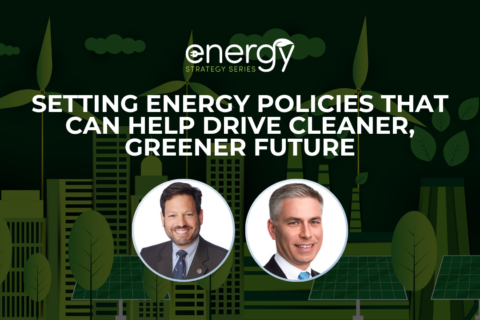The urgency to address environmental concerns has escalated, propelling cities around the world to explore sustainable solutions.
Washington, D.C., has not wavered in its commitment to climate action, with a goal of becoming carbon neutral by 2045.
Like balancing a checkbook, being carbon neutral means in any given year, the city cannot send more greenhouse gases into the atmosphere than it removes.
One significant stride toward that goal is the city’s initiative to increase the number of heavy-duty fleet vehicles capable of running on biodiesel fuel. During WTOP’s Energy Strategy Series 2024, we talked with leaders from D.C. government and their partners to learn more about these efforts.
Those vehicles include enormous trucks such as garbage trucks and snow plows.
“Biodiesel fuel being utilized in a heavy-duty space is technology that is readily available,” said Jason Nordt, fuel management officer with the D.C. Department of Public Works.
Enabling the trucks to operate on biodiesel instead of traditional fuel reduces more than 80% of their greenhouse gas emissions.
“It definitely improves air quality in the city, which is a good thing for everybody,” Nordt said. “We just want to make D.C. a cleaner place.”
Making strong progress
The city’s public works department has hundreds of large trucks, but it is making solid progress in adapting them and making them more sustainable.
More than 100 of the trucks now run on biodiesel.
“We want to eventually convert our entire heavy-duty fleet,” Nordt said. “The engines work the same, the maintenance requirements are the same, and it’s a really familiar kind of operation for the drivers.”
Another agency in D.C. moving in the direction of biodiesel is D.C. Water, the utility that distributes drinking water and collects and treats wastewater for more than 672,000 residents and 17.8 million annual visitors in the district.
Maureen Holman, vice president of shared services at D.C. Water, said the utility already has dozens of its large vehicles running on biodiesel.
“Having a cleaner vehicle really makes us able to provide a better environment and better air quality for residents,” Holman said. “It allows the folks within our fleet team to feel like they’re part of the larger sustainable solutions that D.C. Water is putting forth in the community.”
Where does biodiesel come from?
Biodiesel fuel is created through a “basic chemical process,” said Paul Winters, director of public affairs and federal communications for Clean Fuels Alliance America, the national trade association representing the biodiesel, renewable diesel and sustainable aviation fuel industries.
“Biodiesel is made from renewable resources,” Winters said. “They come from vegetable oils from crops, used cooking oil, recycled animal fats and byproducts from other industries.”
Renewable diesel meets the same specifications and standards as traditional diesel fuel, and it uses infrastructure that’s already built around diesel production.
Because it’s made from renewable resources, biodiesel does not have many of the harmful chemicals that are found in petroleum diesel, which is why it reduces pollutants.
“We commissioned a study looking at cancer rates in D.C. that are attributable to diesel emissions,” Winters explained. “By cutting those emissions, you can immediately reduce cancer rates by about half to two-thirds, and the health care costs associated with that can run up to about $250 million per year.”
Adding to an existing engine
Transitioning a regular diesel engine into one that can run on biodiesel is a process that’s much easier than many people might think.
You do not need to buy a new vehicle or a new engine.
“I describe it as a fairly simple upgrade,” said Colin Huwyler, CEO of Optimus Technologies, a company that manufactures the Vector System, a biodiesel engine technology for medium- and heavy-duty diesel trucks.
Essentially, it enables vehicles to operate on 100% biodiesel.
“Our technology that we manufacture bolts right on to existing engines,” Huwyler said. “We’re helping to facilitate a transition to a low-carbon future by using and leveraging existing infrastructure and existing trucks.”
The upgrade is relatively minor compared to the total cost of the vehicle, and the installation takes about 24 hours.
Currently, it’s much more realistic than switching to electric, Nordt said.
“If you want to switch heavy-duty trucks to electric, you’re looking at $500,000 and up, not to mention the infrastructure that you have to put in place,” he said.
While many people drive electric cars, having a huge truck running on electric is an entirely different story.
“When it comes to vehicles like plow trucks and trash trucks, even having your heat or air conditioning on would significantly reduce your battery availability,” Nordt explained. “You have to consider the fact that electrification in the heavy-duty space is not necessarily there yet.”
To discover more ways that governments, nonprofits and businesses are innovating to reimagine approaches to energy use, go to WTOP’s Energy Strategy Series 2024.






